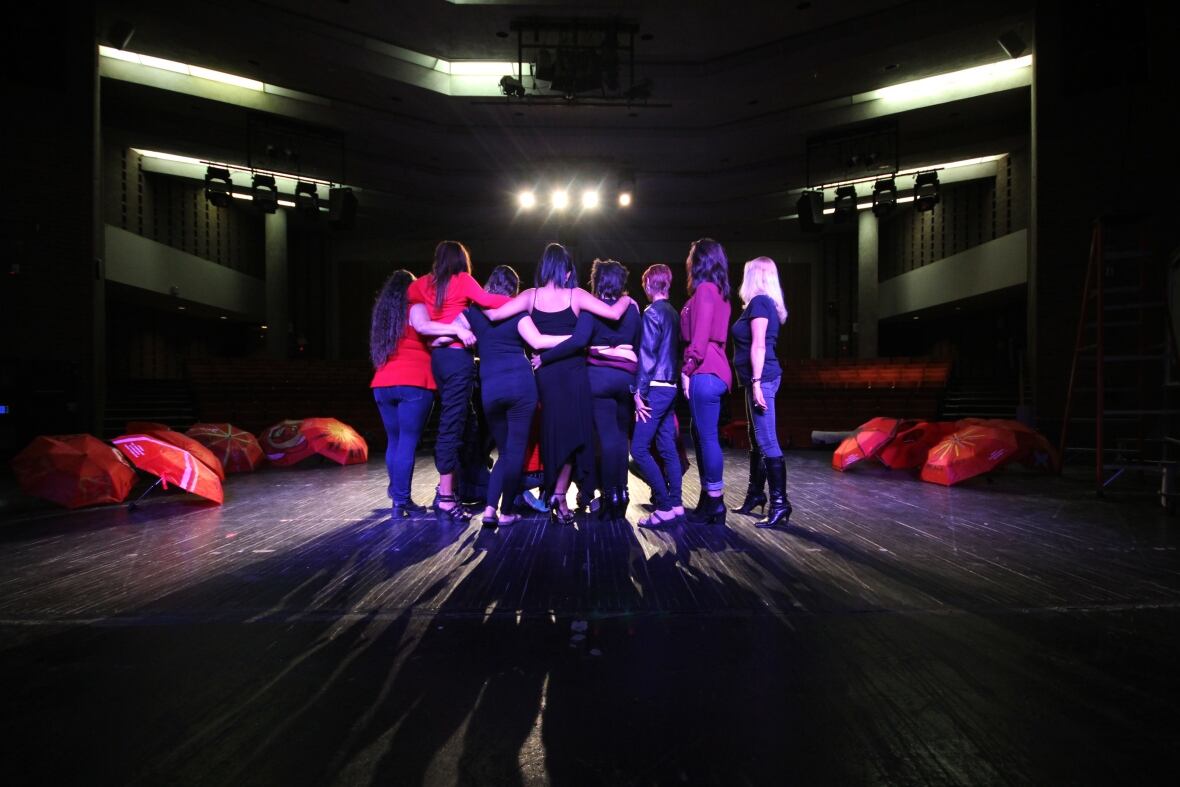Alberta artist builds tiny 'It' house from scratch and more arts stories you might have missed
In this week's Art Post Outpost, Lance Cardinal's incredibly detailed replica of the house gets the spotlight
Here at CBC Arts, you won't just find our original content — we also bring you the best art posts from across the entire CBC network.
These are the week's can't-miss stories:

Little house of horror: Alberta artist creates tiny replica of 'It' house (CBC Edmonton)
"When Lance Cardinal saw the spooky estate in the blood-chilling remake of Stephen King's It, he couldn't help but bring it to life. The northern Alberta artist spent hundreds of hours over two months building a perfect model replica of the Neibolt House. He ended up using everything from Styrofoam to scraps as materials. The grass was made from the bristles of a $3-dollar broom. The sunflowers that dot the rotting front yard were made with paper, wire and an old plastic house plant. The shingles were made with painted card stock. The siding was made from old pizza boxes. The end result is 46 inches wide, 30 inches deep and 30 inches high and includes a light-up interior and a full front yard and fences, as seen in the film."

Locked in a library — and only Jane Austen can help you escape (CBC PEI)
"Jane Austen died 200 years ago this year, but fascination around the celebrated author hasn't waned — so much so, in fact, that a P.E.I. library is offering an escape room with an Austen theme. Escape rooms are a popular form of entertainment in which a group of people are locked in a room and must decipher a series of clues in order to break free. Participants aren't allowed to use the internet to solve the riddles, but 'we're not trying to make it too hard — we're focusing more on the popular parts of her novels and popular characters for the clues,' Dawson said. 'She's very popular — her books continue to go out at the library. She definitely has relevance in modern day as well.'"

Painter turns to digital art following neuromuscular disease diagnosis (CBC Saskatoon)
"Jodi Laycock wasn't ready to give up on art even though she is going blind. The Luseland, Sask., painter started Laycock Digital Art, a pet portrait company, after she was diagnosed with an autoimmune neuromuscular disease that is causing her to go blind and lose mobility. She could no longer paint in a traditional sense, so she began exploring other mediums. Laycock said she didn't know anything about digital art but she purchased Photoshop and began watching YouTube videos on how to use it. Soon, she taught herself to create artwork digitally the way she once had with a brush. 'I don't know how much longer I'm going to be able to do this, sadly,' said Laycock. 'But I can guarantee I'll do it as long as I possibly can.'"

This piece of performance art gives Sudbury sex workers a voice — and they don't want to be 'saved' (CBC Sudbury)
"The team of artists, activists and sex workers behind a new theatre production in Sudbury want you to rethink the sex work industry — and the people who work in it. Sarah Gartshore is the writer and director of the collaborative multi-media show called 'Project ArmHer'. It will be performed by people with lived experience in the sex industry and their allies. Gartshore said rather than 'othering' those in the trade, it's an effort to make sure that insights come straight from the source. 'They own it. It's their stories,' she said. 'What they want to say is important, and the way that they want to say it is important, and they have a right to say it.'"
Ojibway 'Netflix' launches on Apple store (CBC Manitoba)
"The world's first Indigenous language TV streaming app launched on the App Store Tuesday, allowing people to access Ojibway education and entertainment programming through an Apple TV device. The Winnipeg-based developers jokingly call it 'the Ojibway Netflix.' It's all part of a high-tech push to keep Canada's Indigenous languages from disappearing. According to the 2016 census, the number of Aboriginal people who could speak a native tongue has grown by 3.1 per cent since 2006. One in five First Nations people reported being able to conduct a conversation. It also found more people — mostly young — are learning an Indigenous language as a second language."
Bookmark the CBC Arts homepage and follow us on Facebook and Twitter for all the arts stories you need from across the country!